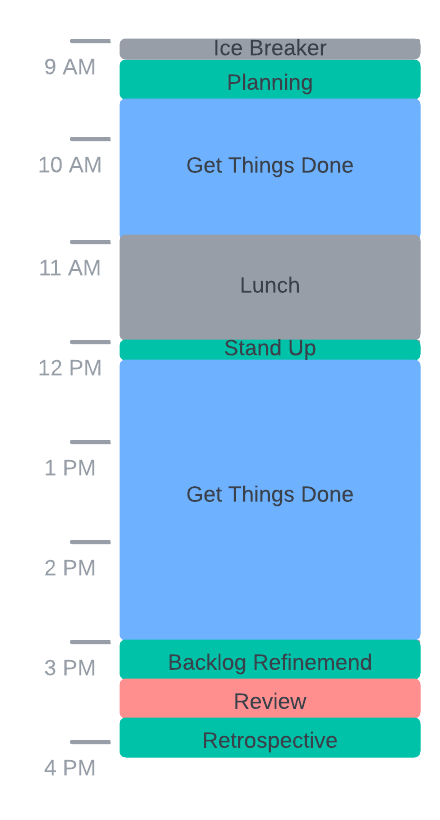The One Day Sprint

One of the challenges of leading a cross-functional team without authority is time allocation. It's challenging to have sufficient attention to the prioritized tasks. Sprints work because they allow teams to select the top items that can be completed and focus on delivering them during a set period. We aim to get the most out of a workday by structuring it well.
The goal is to make the most of the team during the only period when everyone is in the same room.

The day starts with an icebreaker and a planning session. Go as long as it takes until you have a rough plan for the day. Sometimes it takes fifteen minutes, and sometimes longer.
If you finished, well done, go home.
Benefits and prerequisites
This one-day format preserves the benefits of the original five-day Design Sprint, adding even more to the list:
It requires less investment than the original Sprint. With only one day gathering the whole team, the time loss remains small in case of bad feedback from the users.
It can be used even more often, requiring fewer logistics and preparation work.
Most importantly, it allows getting the right people in the room more efficiently, as it is easier to clear one day than five in a busy agenda.
There are some mandatory prerequisites to preserve the benefits of the original Sprint:
The right people need to be in the room from the beginning. If someone is forgotten, they cannot be brought in an emergency on the second day (since there is no second day…).
Most of all, the Facilitator’s skills are put to the test: no time must be lost. Hence the Facilitator must master the various exercises of the day and most importantly be rigorous about timekeeping. The process of making rough versions first and adding detail incrementally within the fixed time boundaries is central to the success of the Sprint.